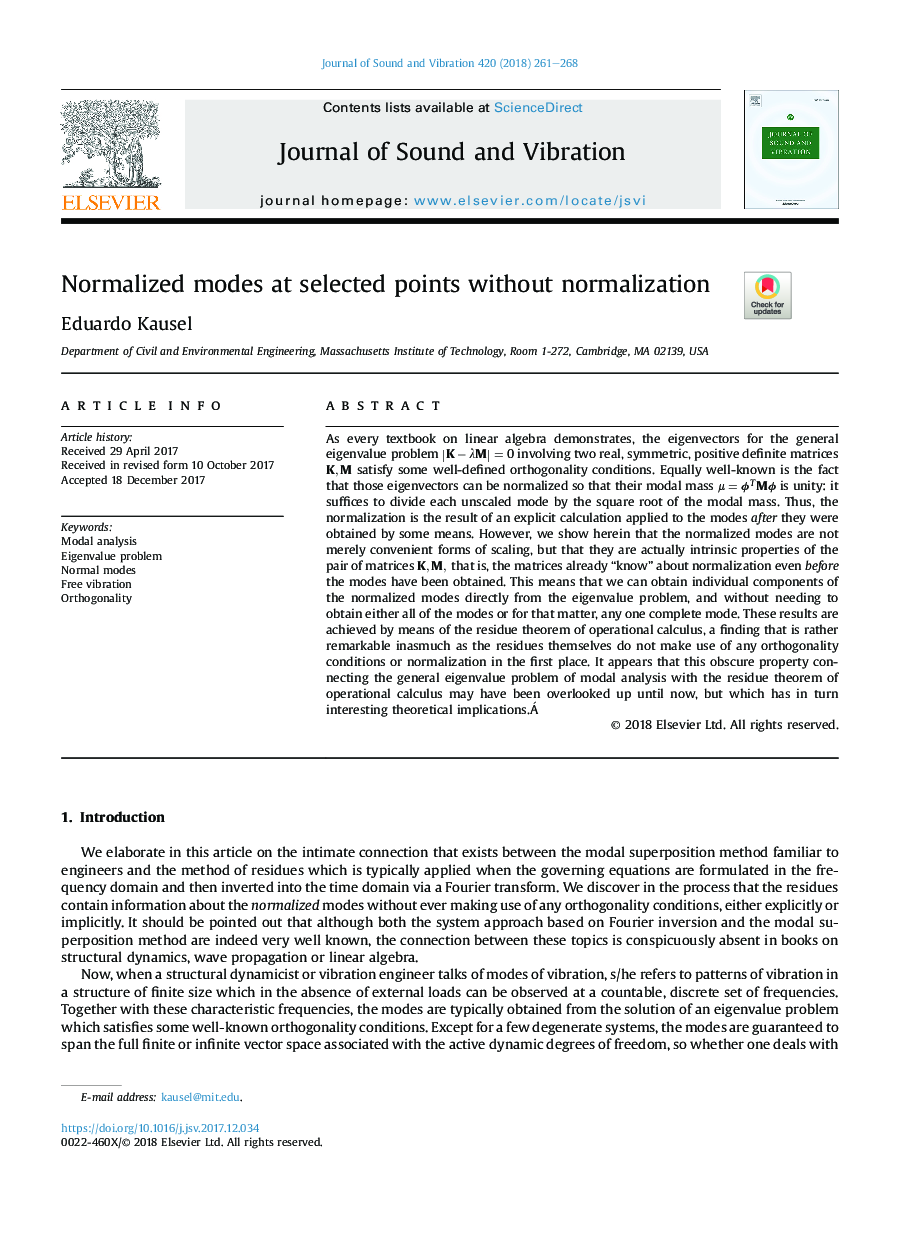| Article ID | Journal | Published Year | Pages | File Type |
|---|---|---|---|---|
| 6753528 | Journal of Sound and Vibration | 2018 | 8 Pages |
Abstract
As every textbook on linear algebra demonstrates, the eigenvectors for the general eigenvalue problem |KâλM|=0 involving two real, symmetric, positive definite matrices K,M satisfy some well-defined orthogonality conditions. Equally well-known is the fact that those eigenvectors can be normalized so that their modal mass μ=ÏTMÏ is unity: it suffices to divide each unscaled mode by the square root of the modal mass. Thus, the normalization is the result of an explicit calculation applied to the modes after they were obtained by some means. However, we show herein that the normalized modes are not merely convenient forms of scaling, but that they are actually intrinsic properties of the pair of matrices K,M, that is, the matrices already “know” about normalization even before the modes have been obtained. This means that we can obtain individual components of the normalized modes directly from the eigenvalue problem, and without needing to obtain either all of the modes or for that matter, any one complete mode. These results are achieved by means of the residue theorem of operational calculus, a finding that is rather remarkable inasmuch as the residues themselves do not make use of any orthogonality conditions or normalization in the first place. It appears that this obscure property connecting the general eigenvalue problem of modal analysis with the residue theorem of operational calculus may have been overlooked up until now, but which has in turn interesting theoretical implications.Á
Related Topics
Physical Sciences and Engineering
Engineering
Civil and Structural Engineering
Authors
Eduardo Kausel,
